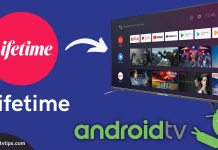
Nose piercing have been a popular form of body modification for centuries. Whether you’re considering getting one for the first time or simply curious about the process, here’s everything you need to know about nose piercings.
Types of Nose Piercings
There are many types of nose piercings, and they come in all shapes and sizes. Depending on what you want your piercing to look like, you can get a round, squared-off, or elongated nose piercing. Some people prefer smaller piercings while others prefer larger ones.

The most popular nose piercings are the cartilage piercings, which are placed just above the nostril. These include the septum (the thin piece of cartilage that separates the right and left nostrils), tragus (the ear flap that hangs over one side of the nose), helix (the spiral on top of the ear), and concha (the fatty prominence on top of the ear). Cartilage piercings are versatile and can be adjusted to change their appearance.

The most common is the nostril piercing, which involves making a small hole in the fleshy part of the nose on either side. Other types include the septum piercing, which goes through the cartilage in the center of the nose, and the bridge piercing, which goes through the skin on the bridge of the nose.
Choosing a Nose Piercing Studio
When choosing a nose piercing studio, it is important to research the staff and their qualifications. Additionally, it is important to consider the equipment and facilities that the studio has available. It is also important to ask about hygiene practices and any recent recalls or safety issues with the equipment or materials used in piercings. Finally, it is helpful to visit several studios in order to compare prices and quality of service.
The Nose Piercing Process

Nose piercings can be extremely beautiful and unique pieces of jewelry, but they also come with a lot of risks. Here are the basics of the nose piercing process:
1. Decide if you want to get a pierced nose. There are many different types of noses available for piercing, so it’s important to choose the right one for you. If you’re not sure what kind of nose piercing you would like, your piercer can usually help you decide.
2. Check your health insurance policy to see if it covers any nose piercings. Most insurance policies do cover some types of piercings, but make sure to check first!
3. Choose a suitable location to get your nose pierced. Your piercer will help you choose a good spot based on your body profile and facial features. Make sure the area is clean and free from any sharp objects or chemicals.
4. Clean the area around your nose before getting pierced. Use soap and water or an antibacterial spray to clean the area well. Make sure there is no dirt, wax, or skin residue on the area where the piercing will take place.
5. Sterilize the area where your piercing will take place using an antibacterial solution or equipment that sterilizes equipment (such as an autoclave). Let the area dry before proceeding with the procedure.
Aftercare
If you’re considering a nose piercing, there are a few things you need to know about aftercare. First, it’s important to keep the area clean and dry. You can use saline solution or a q-tip and antibacterial cream to clean the piercing regularly.
You should also avoid getting any oils, lotions, sunscreen, or other creams on your piercing. This will only make the area more sensitive and increase your risk of infection. If you do get an infection, make sure to see a doctor as soon as possible!
Finally, be sure to wear a bandage or wrap when you’re not wearing your nose jewelry in order to protect it from dirt and debris.
Healing Time
Nose piercings have been around for centuries, and they continue to be popular today. They can be a fun way to express yourself, and they can also offer relief from various conditions. Here are some things to know about nose piercings:
1. Nose piercings are usually done in the cartilage just below the nose. There are many variations, but most involve a single piercing.
2. Healing time for nose piercings is typically short—usually around two weeks. However, some people may experience minor discomfort or soreness during the healing process.
3. After the piercing has healed, you’ll need to take care of it with regular piercing maintenance routine including cleaning and wearing a balm or oil to prevent infection.
Jewelry Options
There are a variety of options available when it comes to nose piercings, from traditional cartilage piercings through to more exotic designs such as labrets and barbells. In this article, we will outline the different types of nose piercings, their benefits and drawbacks, and provide some tips on choosing the right one for you.
Traditional Cartilage Piercings
The most common type of nose piercing is a traditional cartilage piercing. These are done with a standard needle and are relatively painless, although they may take a few weeks to heal. They can often be done in a doctor’s office or at home with basic supplies. They tend to be less expensive than more exotic designs and can last between six and twelve months.
Labret Piercing

A labret piercing is a small, decorative nose piercing that sits just below the lower lip. It is usually done in children under the age of eighteen months but can also be done in adults. Labrets are usually short-lived, lasting around six to twelve months before they need to be replaced by another piercing. They are generally fairly easy to heal but can occasionally require minor medical attention if they become infected.
Barbell Piercing

A barbell piercing is a more advanced type of nose piercing that involves the use of two separate needles – one to pierce the cartilage above the eyebrow (the helix) and one to pierce the cartilage below (the tragus).
Conclusion
Nose piercings are a popular and relatively simple form of body modification. By choosing a reputable piercing studio, following proper aftercare instructions, and selecting the right jewelry, you can enjoy a stylish and well-healed nose piercing.










![Step-by-Step Guide to Activate Bet Plus on Your Mobile Device [2023] Bet plus](https://foritnews.com/wp-content/uploads/2023/07/Bet-plus-100x70.jpg)








